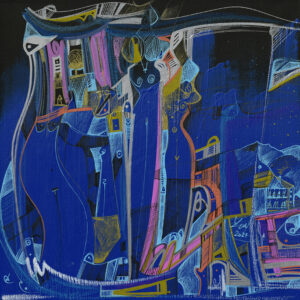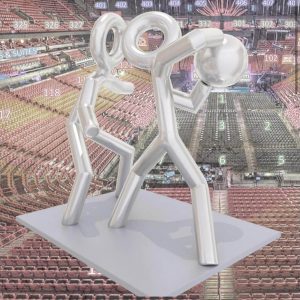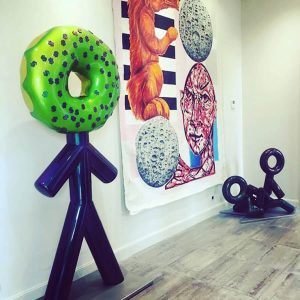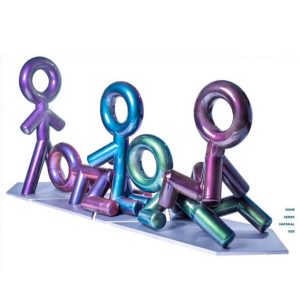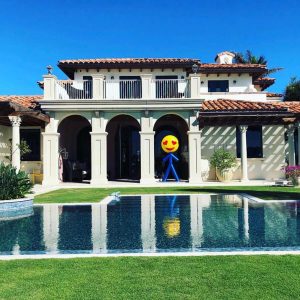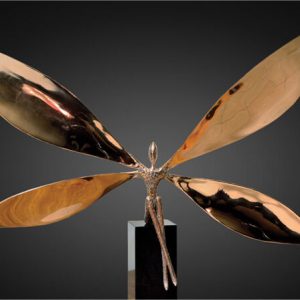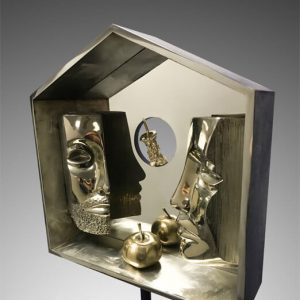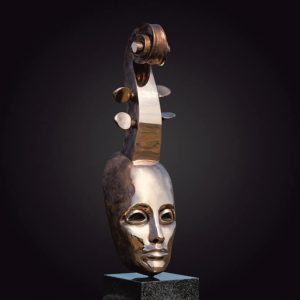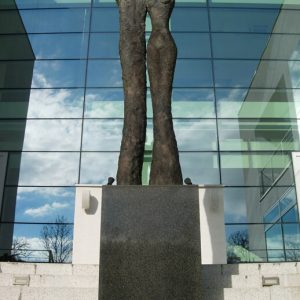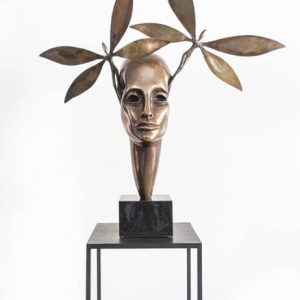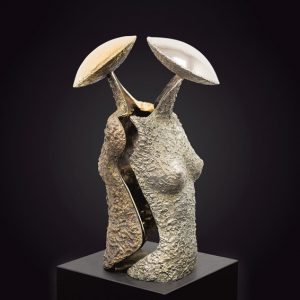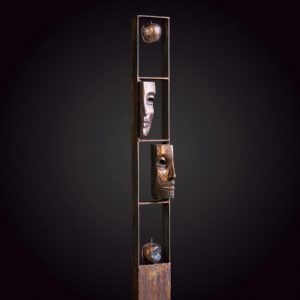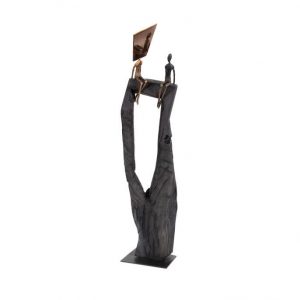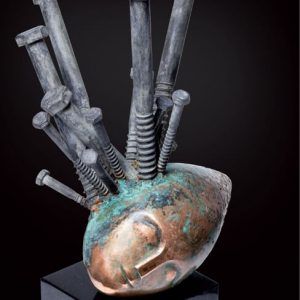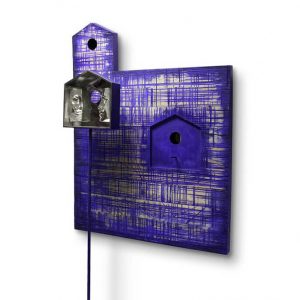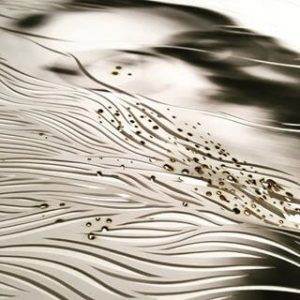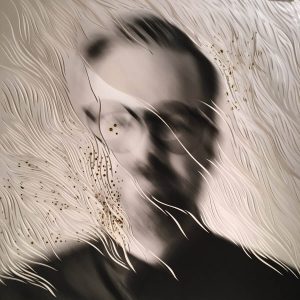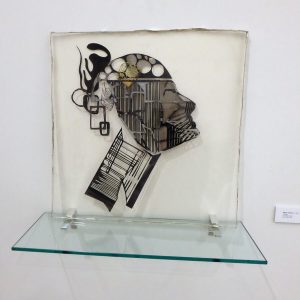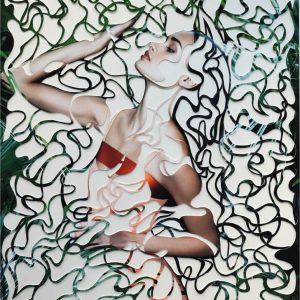Artists
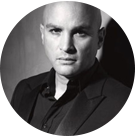
Eddy Bogaert
Eddy Bogaert is an artist whose paintings are coveted by the who’s who of the art, music, and fashion world. His work reveals a variety of contrasting aesthetics he has described as a “chaotic balance”. The artist resides in New York City, Miami, and Los Angeles seducing the art community in each city nomadically “painting the town” with his unconventional imprint. Using mixed media and bright colors against dark canvases he illustrates the contradictions and layers of humanity. Known for his edgy style and crowd-drawing popularity his art is notorious among New York City’s nightlife society with art exhibits hosted at Marquee and Jia Lounge. His art is splattered all over Art Basel Miami like paint on canvas. Featured at multiple Art Basel Galleries and high profile parties his paintings and presence is in demand. Eddy recently collaborated with Midtown Manhattan’s Bloomingdales and constructed art installations inside the luxurious department store in addition to curating all of the Bloomingdales window displays with his original art and concepts.
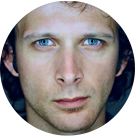
Luka Brase
Artist from the heart of Europe was born in 1983 in Czechoslovakia. He studied art at the Academy of Arts in Slovakia. He has done 30 solo exhibitions in Norway, Belgium, Netherlands, Austria, Germany, Ireland, Slovakia, United Kingdom, Hungary, Switzerland, Czech Republic, USA – New York, Washington DC, Philadephia, Los Angeles, China – Shanghai and Beijing. 18 group participations in the Netherlands, Austria, Czech Republic, Slovakia, Ireland, France among them important show in Künstlerhaus Wien, Afordable art fair Amsterdam, Accessible art fair Bratislava and Cite Internationale Des Arts in Paris. His art is a part of the permanent collection in the Museum of Art – SUPEC Shanghai, China. His works belong to private collections in many countries in the world. He is the founder of project Art on the way and represented by DE Galerie in Den Haag, Netherlands and Artgogo gallery in Shanghai, China. Luka Brase works and lives across Europe.

Lina Condes
was born in 1988 in Cherkassy, Ukraine. As an artist of a new generation, Condes incorporates principles of bionic architecture and design into her work. Her sculptures reflect the emptiness and anonymity of common actions that have no attachment to color, creed, gender, religion, language or sexual orientation. They are hysterically self-aware and shameless in their straightforward crudity. Condes renders her works using computer technology, but the end result is far from mechanized. She presents her figures as nameless, featureless entities performing a physical act that only living beings can observe and appreciate. Solo presentations of Condes’ work have been held at the M17 Contemporary Art Center and in the Trade Chamber of Ukraine in Kiev. In 2016, Condes was awarded the “IEAA Best of International Emerging Artist Award” in Dubai (UAE). In 2017, Condes presented her solo project “Extraterrestrial Odyssey” at the Venice Biennale. Condes showed with Avant Gallery in the Art Miami art fair in 2019.

Martin Dzurek
works of the more than two decades at exhibitions, at various social and cultural events, but also in the exteriors and interiors of many institutions, sacral and public spaces, or private residences. These are chamber works in a monumental, poetic-lyrical and dramatic, meditative and expressive way, but in any case they will appeal to us with their inventive and well-thought-out composition, rolled out and harmonious composition of volumes, but especially the dignity and intensity of the message they bring. Martin Dzurek is an author who has been working in classical sculptural materials since the beginning. He prefers bronze in its most noble forms, usually combining it with iron, stainless steel and wood, but later he also attracts other materials, plastic, plaster and, most recently, beeswax, which gives his efforts a new and unexpected expression and symbolism. He is figurative. His sculptural art lip is based on real shapes, which gradually deprives descriptive details and stylizes once into perfect human profiles, in which the classical beauty of ancient pains and sometimes slim dehumanized bodies resonate, evoking the subtle fragility of Giacometti's characters and the surreal tension of their mutual resonance. He models his sculptures in smooth flowing volumes, which create an inner light and shine with a perfect shine, other times it brings a more robust, coarser and, as if wrinkled surface, which patinates poly chrome, contrasts with other materials. He often uses views, the mirror motif, the effects of mirroring and reflections, or the mutual duality of negative and positive. He preserves the symbolism of shapes and relationships. Not only that, but he interprets his vision and inner experience of the surrounding world and its reality. Martin Dzurek's sculptures can ask questions. Subtle — unobtrusive and unobtrusive, sometimes essential and urgent. They concern interpersonal relationships, love and rapprochement, but also alienation, fear and anxiety. They are a warning and a challenge to humanity and consideration, not only for each other, but also in relation to the environment and nature. They send out impulses that do not leave us indifferent and invite us to enter into a dialogue with the author and his work.
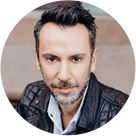
Marco Gallotta
works of the more than two decades at exhibitions, at various social and cultural events, but also in the exteriors and interiors of many institutions, sacral and public spaces, or private residences. These are chamber works in a monumental, poetic-lyrical and dramatic, meditative and expressive way, but in any case they will appeal to us with their inventive and well-thought-out composition, rolled out and harmonious composition of volumes, but especially the dignity and intensity of the message they bring. Martin Dzurek is an author who has been working in classical sculptural materials since the beginning. He prefers bronze in its most noble forms, usually combining it with iron, stainless steel and wood, but later he also attracts other materials, plastic, plaster and, most recently, beeswax, which gives his efforts a new and unexpected expression and symbolism. He is figurative. His sculptural art lip is based on real shapes, which gradually deprives descriptive details and stylizes once into perfect human profiles, in which the classical beauty of ancient pains and sometimes slim dehumanized bodies resonate, evoking the subtle fragility of Giacometti's characters and the surreal tension of their mutual resonance. He models his sculptures in smooth flowing volumes, which create an inner light and shine with a perfect shine, other times it brings a more robust, coarser and, as if wrinkled surface, which patinates poly chrome, contrasts with other materials. He often uses views, the mirror motif, the effects of mirroring and reflections, or the mutual duality of negative and positive. He preserves the symbolism of shapes and relationships. Not only that, but he interprets his vision and inner experience of the surrounding world and its reality. Martin Dzurek's sculptures can ask questions. Subtle — unobtrusive and unobtrusive, sometimes essential and urgent. They concern interpersonal relationships, love and rapprochement, but also alienation, fear and anxiety. They are a warning and a challenge to humanity and consideration, not only for each other, but also in relation to the environment and nature. They send out impulses that do not leave us indifferent and invite us to enter into a dialogue with the author and his work.















